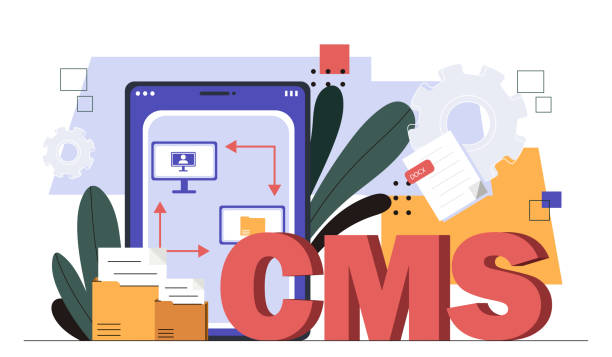Frequently Asked Questions: Your Step‑by‑Step Guide to Building a Multilingual Web Page

Frequently Asked Questions: Your Step‑by‑Step Guide to Building a Multilingual Web Page
By MOSEGAS – Professional Web‑Design Blogger
“A website that speaks your visitor’s language is not a luxury; it’s a competitive advantage.” – Ayesha Patel, Senior UX Designer, GlobalTech
Creating a web page that gracefully adapts to multiple languages is no longer a “nice‑to‑have” feature. With the internet’s audience spread across continents, businesses, NGOs, and personal projects alike must think globally from day one. Yet many developers stumble when they try to sprinkle translations onto an existing site, only to end up with broken layouts, SEO penalties, or a maintenance nightmare.
This FAQ‑style, step‑by‑step guide walks you through the entire process—right from planning to deployment—while answering the most common questions beginners and seasoned pros ask. We’ll discuss the why, the what, and the how of multilingual web development, peppered with real‑world code snippets, best‑practice tables, and expert quotes to keep the concepts concrete.
Table of Contents
| Section | What You’ll Learn |
|---|---|
| 1️⃣ | Why Build a Multilingual Site? – Business, SEO & UX benefits |
| 2️⃣ | Planning & Content Strategy – Language selection, content workflow |
| 3️⃣ | HTML Foundations – lang attribute, character sets, SEO meta tags |
| 4️⃣ | Styling for Different Scripts – CSS‑centric solutions for RTL & Asian scripts |
| 5️⃣ | JavaScript Internationalisation (i18n) – Libraries, JSON files, runtime switching |
| 6️⃣ | Server‑Side vs. Client‑Side Rendering – When to choose each approach |
| 7️⃣ | Dynamic Routing & URL Structures – Sub‑domains, sub‑folders, query strings |
| 8️⃣ | Accessibility & Testing – WCAG, screen‑readers, automated tools |
| 9️⃣ | Deployment & Continuous Localization – CI/CD pipelines, translation management |
| 🔟 | FAQs Recap – Quick answers to the most frequent doubts |
| 📚 | Resources & Further Reading – Books, tools, and community sites |
1️⃣ Why Build a Multilingual Site?
1.1 Business Impact
- Revenue boost – According to a Common Sense Advisory study, 75 % of consumers prefer to buy products in their native language, and 56 % never purchase from a site that isn’t available in their language.
- Brand trust – A consistent, localized experience signals respect for your audience’s culture, increasing brand loyalty.
1.2 SEO Advantages
Search engines treat each language version as a separate page, giving you more indexable URLs. Properly using hreflang tags tells Google which version to serve to which user, preventing duplicate‑content penalties.
“If you ignore
hreflang, you’re essentially shouting in a crowded room; search engines won’t know which voice to amplify.” – Marco Giannini, SEO Specialist, Moz
1.3 User Experience (UX)
- Readability – Scripts like Arabic, Hebrew, or Chinese have unique typographic needs.
- Performance – Local assets (fonts, images) reduce latency for far‑flung users.
2️⃣ Planning & Content Strategy
Before typing a single line of code, answer these questions:
| Question | Why It Matters | Typical Answer |
|---|---|---|
| Which languages? | Determines scope, budget, and technical choices. | English, Spanish, Mandarin, Arabic |
| Who will translate? | In‑house translators vs. third‑party agencies affect workflow. | In‑house for core copy, agency for marketing. |
| How often will content change? | Influences whether you need a static build or dynamic CMS. | Weekly blog updates, quarterly product pages. |
| Will you support right‑to‑left (RTL) scripts? | Affects CSS directionality and layout decisions. | Yes – Arabic and Hebrew. |
| What is your fallback strategy? | When a translation is missing, decide what to display. | Show English fallback with a “translation coming soon” badge. |
Tip: Create a Content Localization Matrix (see Table 2) to track each page, its source language, target languages, and translation status. This matrix becomes a living document for developers, translators, and product owners.
Table 2 – Sample Content Localization Matrix
| Page ID | Source Lang | Target Lang(s) | Translation Status | Last Updated | Notes |
|---|---|---|---|---|---|
/ (Home) |
EN | ES, ZH, AR | ✅ Completed | 2025‑09‑12 | RTL CSS applied |
/products |
EN | ES, ZH | ⏳ In progress | – | Need product spec translations |
/blog/2025/10/hello-world |
EN | ES, ZH, AR | ✅ Completed | 2025‑10‑01 | Auto‑generated meta tags |
/privacy |
EN | ES, ZH, AR | ❌ Not started | – | Legal review required |
3️⃣ HTML Foundations
3.1 Declaring the Page Language
<!DOCTYPE html>
<html lang="en"> <!-- default language -->
<head>
<meta charset="UTF-8">
<title>My Multilingual Site</title>
...
</head>
<body>
...
</body>
</html>
Why it matters:
- Screen readers announce the correct language.
- Search engines index language correctly.
When you serve a page in Spanish, simply change the lang attribute:
<html lang="es">
3.2 Using hreflang for SEO
Add link tags in the <head> of each language version:
<link rel="alternate" hreflang="en" href="https://example.com/en/">
<link rel="alternate" hreflang="es" href="https://example.com/es/">
<link rel="alternate" hreflang="zh-CN" href="https://example.com/zh/">
<link rel="alternate" hreflang="ar" href="https://example.com/ar/">
<link rel="alternate" hreflang="x-default" href="https://example.com/">
3.3 Meta Tags for Character Encoding
Always use UTF‑8 to support every script:
<meta charset="UTF-8">
If you have older legacy browsers, you can add:
<meta http-equiv="X-UA-Compatible" content="IE=edge">
3.4 Structured Data & Language
When marking up schema.org entities, specify inLanguage:
{
"@context": "https://schema.org",
"@type": "Article",
"headline": "Cómo crear una página web multilingüe",
"inLanguage": "es"
}
4️⃣ Styling for Different Scripts
4.1 Left‑to‑Right (LTR) vs. Right‑to‑Left (RTL)
Add a CSS class on the <html> element that mirrors the lang direction:
<html lang="ar" dir="rtl">
CSS reset for RTL:
/* Base layout */
body {
direction: ltr; /* default */
}
/* Override for RTL languages */
html[dir="rtl"] body {
direction: rtl;
text-align: right;
}
/* Flip icons that are direction‑aware */
html[dir="rtl"] .icon-arrow {
transform: scaleX(-1);
}
4.2 Font‑Family Considerations
| Script | Recommended Web‑Safe Font | Google Font | Fallback |
|---|---|---|---|
| Latin (EN/ES) | Helvetica, Arial, sans-serif |
Roboto | sans-serif |
| Simplified Chinese | "Noto Sans SC", "Microsoft YaHei", sans-serif |
Noto Sans SC | sans-serif |
| Arabic | "Amiri", "Cairo", "Tahoma", sans-serif |
Cairo | sans-serif |
Loading only needed font subsets reduces bundle size:
<link href="https://fonts.googleapis.com/css2?family=Roboto:wght@400;700&family=Cairo:wght@400;700&display=swap" rel="stylesheet">
4.3 Responsive Typography
Use clamp() to keep text readable across devices, regardless of script density:
h1 {
font-size: clamp(1.8rem, 4vw, 3rem);
}
5️⃣ JavaScript Internationalisation (i18n)
5.1 Choosing a Library
| Library | Size | Features | Typical Use‑Case |
|---|---|---|---|
| i18next | ~10 KB (gzip) | Pluralization, nesting, lazy loading | SPA & SSR projects |
| react-intl | ~5 KB | ICU MessageFormat, works with React | React apps |
| vue-i18n | ~7 KB | Vue 2/3 integration | Vue apps |
| formatjs | ~13 KB | Rich formatting (dates, numbers) | Intl‑heavy apps |
Recommendation: For a vanilla‑JS or mixed stack, start with i18next because it works on the server, client, and even in static site generators.
5.2 Organising Translation Files
Create a folder locales/ with JSON files per language.
locales/
├─ en.json
├─ es.json
├─ zh.json
└─ ar.json
Example en.json
{
"nav": {
"home": "Home",
"about": "About Us",
"contact": "Contact"
},
"hero": {
"title": "Welcome to Our Global Platform",
"subtitle": "Building bridges across languages."
},
"footer": {
"rights": "All rights reserved."
}
}
Spanish (es.json) – notice that the order of keys stays identical, making maintenance painless.
{
"nav": {
"home": "Inicio",
"about": "Sobre Nosotros",
"contact": "Contacto"
},
"hero": {
"title": "Bienvenidos a Nuestra Plataforma Global",
"subtitle": "Construyendo puentes entre lenguas."
},
"footer": {
"rights": "Todos los derechos reservados."
}
}
5.3 Initialising i18next
import i18next from 'i18next';
import Backend from 'i18next-http-backend';
import LanguageDetector from 'i18next-browser-languagedetector';
// Basic configuration
i18next
.use(Backend) // Loads JSON files via XHR
.use(LanguageDetector) // Detects user language from browser, query, cookie
.init({
fallbackLng: 'en',
debug: true,
backend: {
loadPath: '/locales/{{lng}}.json' // where JSON lives
},
interpolation: {
escapeValue: false // React already escapes
}
});
5.4 Rendering Translations in the DOM
<nav>
<ul>
<li><a href="/" data-i18n="nav.home"></a></li>
<li><a href="/about" data-i18n="nav.about"></a></li>
<li><a href="/contact" data-i18n="nav.contact"></a></li>
</ul>
</nav>
<h1 data-i18n="hero.title"></h1>
<p data-i18n="hero.subtitle"></p>
// After i18next.init resolves
i18next.on('initialized', () => {
document.querySelectorAll('[data-i18n]').forEach(el => {
const key = el.getAttribute('data-i18n');
el.textContent = i18next.t(key);
});
});
5.5 Language Switcher
<select id="lang-switcher">
<option value="en">English</option>
<option value="es">Español</option>
<option value="zh">中文</option>
<option value="ar">العربية</option>
</select>
document.getElementById('lang-switcher').addEventListener('change', (e) => {
const lng = e.target.value;
i18next.changeLanguage(lng).then(() => {
// Re‑render all translatable nodes
document.querySelectorAll('[data-i18n]').forEach(el => {
const key = el.getAttribute('data-i18n');
el.textContent = i18next.t(key);
});
// Update <html lang> attribute for accessibility & SEO
document.documentElement.lang = lng;
// Update direction for RTL languages
document.documentElement.dir = (lng === 'ar' || lng === 'he') ? 'rtl' : 'ltr';
});
});
Result: The page instantly swaps text, updates the lang attribute, and flips layout direction for RTL languages—without a full reload.
6️⃣ Server‑Side vs. Client‑Side Rendering
| Approach | When to Choose | Pros | Cons |
|---|---|---|---|
Static‑Site Generation (SSG) (e.g., Next.js getStaticProps, Hugo) |
Content rarely changes, SEO‑critical pages | Lightning‑fast, CDN‑ready, no runtime i18n JS needed | Requires rebuild for each language change |
Server‑Side Rendering (SSR) (e.g., Next.js getServerSideProps, Express) |
Frequently updated content, personalized locales | Fresh data on each request, proper Accept-Language handling |
Higher server load, more complex caching |
| Client‑Side Rendering (CSR) (SPA) | Dashboard apps, internal tools | UI is highly interactive, language can be switched on‑the‑fly | SEO may suffer unless you pre‑render or use prerender.io |
Practical tip: Combine SSG for public marketing pages (home, blog) with CSR for user‑specific sections (profile, dashboard). This hybrid approach gives you the best of both worlds.
7️⃣ Dynamic Routing & URL Structures
7.1 URL Strategies
| Strategy | Example URL | SEO Impact | Maintenance |
|---|---|---|---|
| Sub‑domains | es.example.com |
Clear language signal, easy CDN config | Requires DNS and SSL for each sub‑domain |
| Sub‑folders | example.com/es/ |
Simpler setup, accepted by Google | Must configure server rewrites |
| Query parameter | example.com?lang=es |
Least SEO‑friendly (often ignored by Google) | Quick to implement, but not recommended for public pages |
| Top‑Level Domain (TLD) | example.es |
Strong geo‑targeting, costly for many locales | Complex SSL & hosting multi‑domain |
Recommendation: Sub‑folders (`example.com/es/





